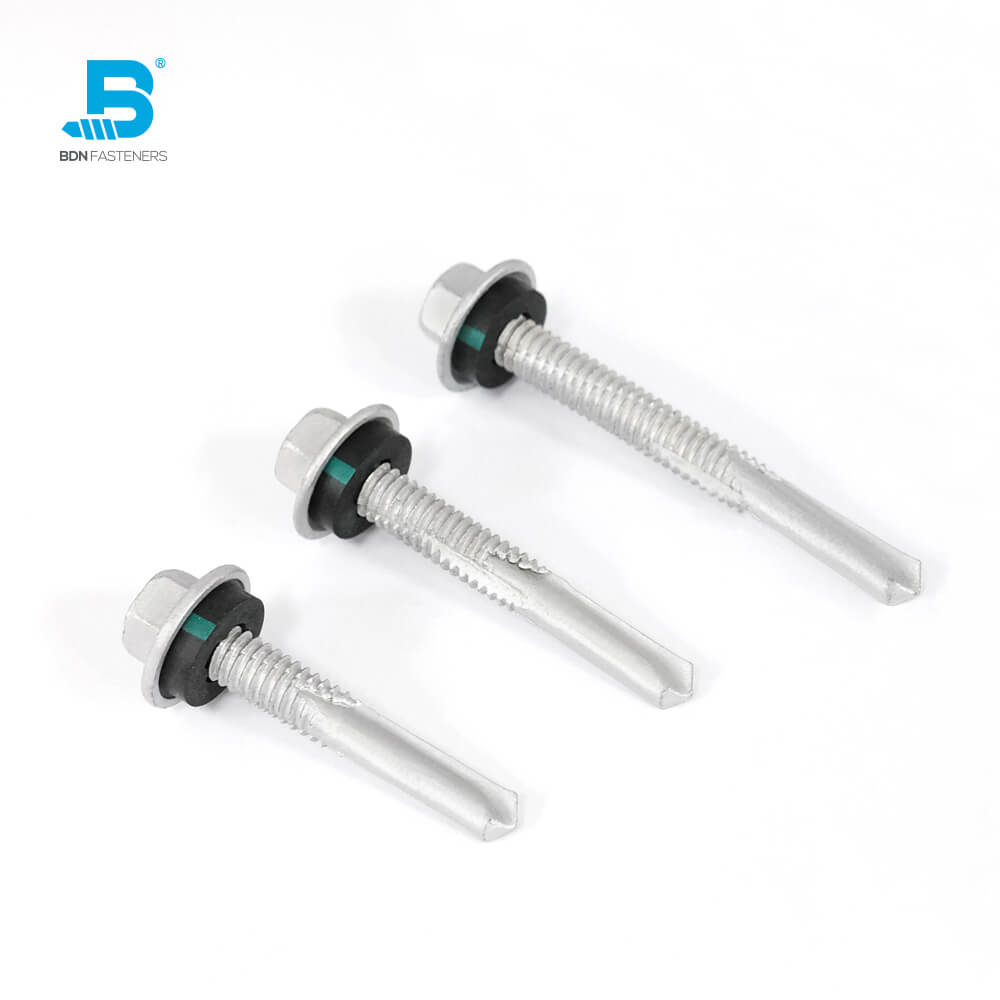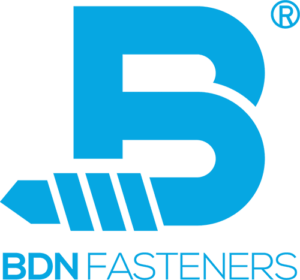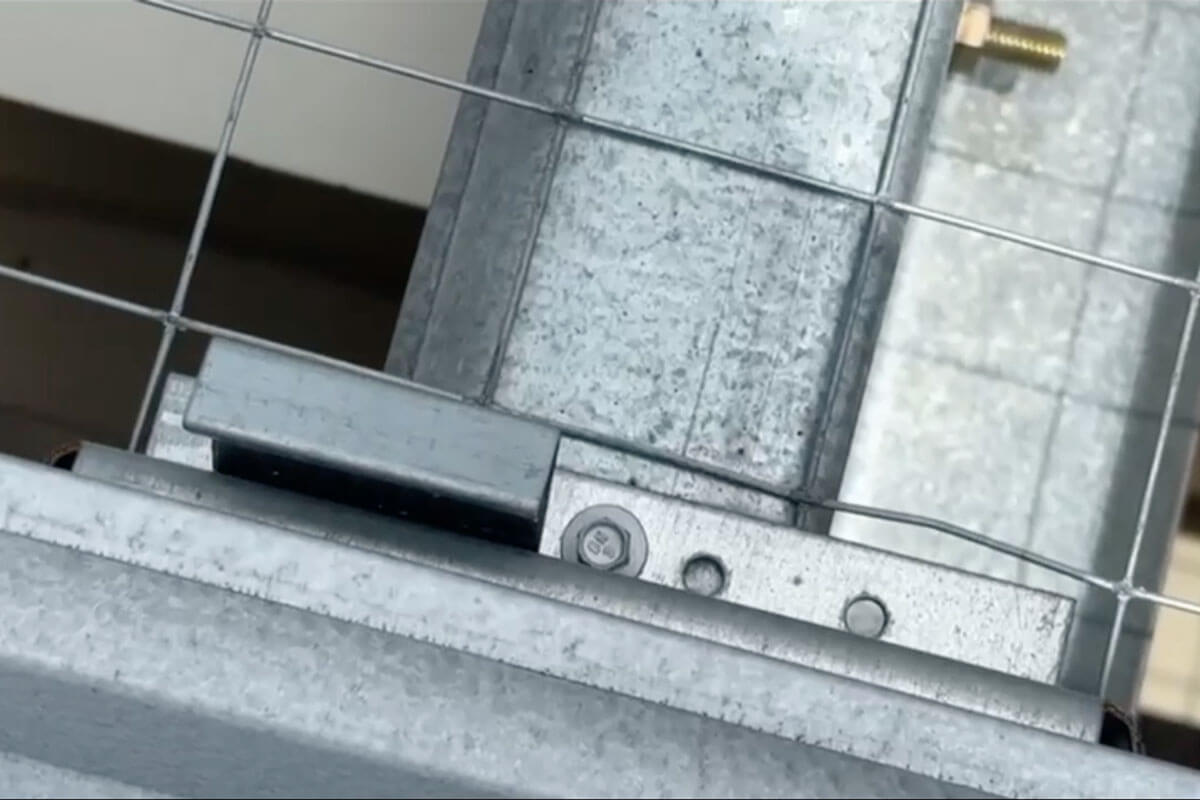Tek Screws Sizes and Diameter: A Guide to Choosing the Right Fit
The term “Tek screw” originates from an original trademarked brand of self-drilling screws manufactured in Australia. Over time, similar to how the brand name Kleenex has been used informally as a genericized trademark for facial tissue, Tek screws became a well-known name for any screw with a self-drilling tip, especially within the building and construction industry.
What Are Tek Screws?
Tek screws, or self-drilling screws, are a combination of 3 functions inone – drilling, tapping (forming threads), and fastening, which are performed simultaneously in a single operation.
What distinguishes Tek screws from other fasteners is their built-in drill bit tip, which comes in different Tek screws sizes depending on the application. This feature directly influences how the screw performs, since the Tek screw diameter plays a key role in determining its effectiveness across various materials and thicknesses.
Why Tek Screws Size Matters: Structural Integrity
One of the primary reasons Tek screw size matters is structural integrity. A screw that is too short may not fully penetrate the base material, compromising the load-bearing capability of the joint. Conversely, a screw that is too long may punch through the other side or become loose over time due to inadequate thread engagement.
For instance, attaching a steel roofing sheet to a metal purlin requires a screw that can penetrate both the sheet and the purlin, while still allowing for several threads to grip the base material.
Tek Screws Sizes Are Too Small in Length or Diameter
If the screw is undersized in either length or diameter, it can result in:
- Pull-out failure
- Stripped threads
- Water leakage (especially in roofing)
Tek Screws Sizes Are Too Large in Length or Diameter
On the other hand, if the screw is oversized in either length or diameter, it can result in:
- Ineffective drilling or “no-drill”
- Drilling-Tip burnout
- Loose fixing due to insufficient thread engagement.
In structural applications, these failures can be catastrophic.
Key Factors Affecting Tek Screws Sizes and Performance
In terms of size, the following components that would influence the size and in turn, the performance of the Tek screw are:
Head Size:
Tek screw heads come in a variety of sizes and designs, with the most common being the Hexagon (Hex for short) washer head, is used for fixing roofing profiles through the crest and fixing wall cladding through the valley. Hex Washer Head screws provide a large tool driving and load bearing platform.
Shank Diameter:
Aside from full threaded screws, which are more commonly seen and used, there are also double-threaded screws, which have a smooth shank spaced in between the threads leaving space to accommodate the thickness of the insulation.
Thread Diameter:
Thread diameter is crucial to the holding strength of substrates when joined together. As a general rule of thumb, fixing thicker substrates requires a smaller thread diameter and pitch while fixing thin substrates requires larger thread diameters and pitch.
Drill Point Diameter:
Drill point diameter and length directly affect drilling performance. Thicker material may require a larger drilling point diameter in order to penetrate effectively without needing a pilot-hole, though its thread diameter also has to be in proportion to provide sufficient thread engagement.
Drilling Point Length:
Longer self-drilling screw points offer a couple of advantages, which primarily relate to their ability to penetrate through thicker material or join multiple layers of material.
About Tek Screw Diameter and Sizes
Tek screw diameter and size play a key role in ensuring proper fit, strength, and durability. By understanding how Tek screws are classified by diameter, length, and overall size, you can choose the right fastener to match your material thickness and application needs.
Tek Screw Size Classifications
Tek screws sizes are typically identified by:
- Gauge (diameter)
- Length (in inches or millimeters)
- Thread per inch (TPI) or metric pitch
- TEK point number
Gauge Sizes
Gauge refers to the outer diameter of the screw shank (measured in inches). Common Tek screw gauges include:
- #6 (approx. 0.138″ or 3.5 mm)
- #8 (0.164″ or 4.2 mm)
- #10 (0.19″ or 4.8 mm)
- ST 5.5 (No. 12) – (0.216″ or 5.5 mm)
- ST 6.3 (No. 14) – (0.25″ or 6.3 mm)
The higher the number, the thicker the screw.
Length
Screw length is measured from the tip of the drill point to the bottom of the head on Hex headed screws, and to the top of the head for flat headed screws, such as Truss head screws or CounterSunK (CSK) screws. Typical Tek screw lengths range from:
- Short screws: Between 9.5mm (3/8″) ~ 16mm (5/8″)
- Medium screws: Between 19mm (3/4″) ~ 50mm (2″)
- Longer screws: 65mm (2-1/2″) and beyond
Other Questions About Tek Screws
Beyond size, diameter, and length, there are several other aspects to consider when working with Tek screws. These additional questions can help you choose the right fastener for your project and ensure long-lasting performance.
What Are the Different Thread Types?
According to Australian AS3566.1 standards, self-drilling screws intended for drilling and tapping into layered or unlayered steel with a minimum total thickness of 0.9 mm are classified into three types: ASD, BSD, and CSD.
ASD and BSD screws feature spaced threads, while CSD screws use UNC machine screw thread profiles with a 60-degree standard thread form.
The drill points are designated as No. 2, No. 3, and No. 4 for ASD, BSD, and CSD screws, respectively, each suited for different panel thicknesses.
TEK Point Numbers: What Do They Mean?
Tek screws are rated from No. 1 (TEK 1) to No. 5 (TEK 5), with the number indicating the drill capacity—the maximum thickness of steel the screw can penetrate without pre-drilling.
Drilling and Threading Capacity (mm)
The following table lists the maximum material thickness each size designation is capable of drilling through prior to thread pick-up. The material thickness includes single, double, and spaced material layers.
| Size designation | Type ASD (Point No. 2) | Type BSD – Point No. 2 | Type BSD – Point No. 3 | Type CSD – Point No. 2 | Type CSD – Points No. 3 and No. 4 |
| 3.5 (No. 6) | 2.3 | 2.8 | 2.3 | 2.8 | |
| 4.2 (No. 8) | 2.5 | 3.6 | 2.5 | 3.6 | |
| 4.8 (No. 10) | 2.5 | 4.5 | 4.5 | 4.5 | |
| 5.5 (No. 12) | 3 | 3.6 | 4.5 | 3.6 | 5.3 |
| 6.3 (No. 14) | 3 | 4.4 | 6.3 | 4.4 | 6.3 |
What Is Protrusion Allowance?
Screw protrusion allowance, also known as thread protrusion. It is measured starting from just beyond the extreme point of the first full-form thread, and this measurement also includes the drill point length.
The protrusion allowance is critical to ensuring adequate thread engagement as well as preventing stripped threads and insufficient damping force.
How Are Tek Screws Sizes Related to Installation Efficiency and Cost?
Incorrect screw sizing doesn’t just lead to mechanical failure—it affects productivity and cost. A screw that is too long can take longer to drive and may require additional torque, increasing wear on power tools and operator fatigue.
A screw that is too short might have to be replaced after initial fastening attempts fail, leading to wasted time and materials. Poorly manufactured screws also play a part in efficiency. Be sure to choose products from a reputable supplier, as a working screw is an efficient screw.
In projects where thousands of screws are used, these inefficiencies can compound quickly, increasing labor costs and reducing overall profitability.
What Is the Relationship Between Tek Screws Sizes and Regulatory and Engineering Compliance?
In many industries—such as construction, infrastructure, and transportation—fastener specifications must meet stringent building codes or engineering standards. Using an incorrect screw size, even unintentionally, can void warranties, result in failed inspections, or lead to liability in the event of structural issues.
Manufacturers often publish load tables and drill capacity charts to help specifiers and installers select the correct Tek screw for each application. Ignoring these guidelines in favor of “just using what’s available” can have serious consequences.
Best Practices for Choosing the Right Size
To ensure that Tek screw sizing meets the demands of your project, follow these best practices:
- Know Your Material Thickness: Always measure or reference the combined thickness of the materials to be joined.
- Use Manufacturer Guides: Refer to Tek screw selection charts provided by manufacturers.
- Account for Thermal Expansion: In roofing or cladding, allow for panel movement by selecting screws with adequate washer compression and thread engagement.
- Avoid Overkill: Bigger isn’t always better—using a #14 screw where a #10 is sufficient may damage the material or add unnecessary cost.
- Consider Tooling Compatibility: Ensure your driver bits and torque settings match the screw head style and size.
Tek screw size and diameter are far more than a simple specification—they are critical determinants of performance, reliability, and cost-efficiency. Choosing the correct screw size ensures strong, lasting connections, compliance with standards, and optimized installation speed. The wrong size can lead to structural failure, aesthetic issues, increased costs, and even safety hazards. Whether you’re fastening steel sheets on a roof, installing wall cladding, or assembling metal frames, taking the time to select the right Tek screw size is a must for professional results.
As with any component in construction or engineering, precision matters. Tek screws may be small, but when it comes to performance, the right size can make all the difference.
If you have more questions about Tek screw sizes and diameters, feel free to contact us. Our professional team will be happy to assist you.








